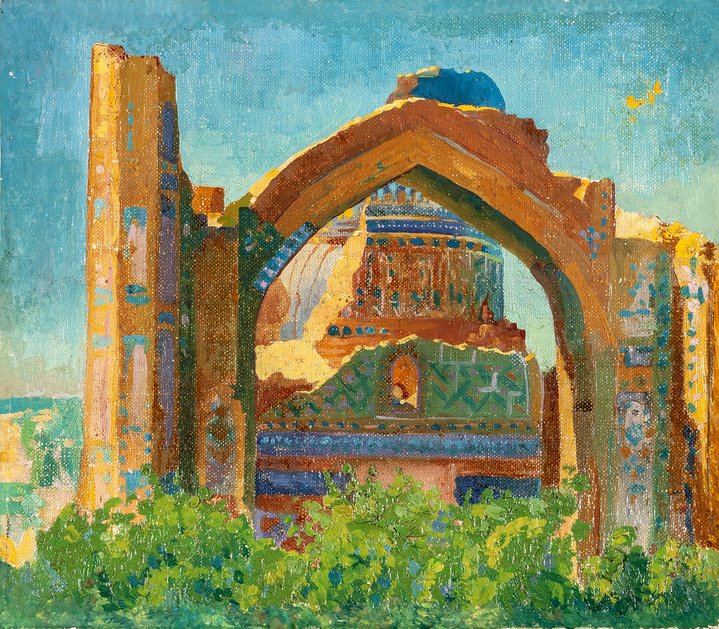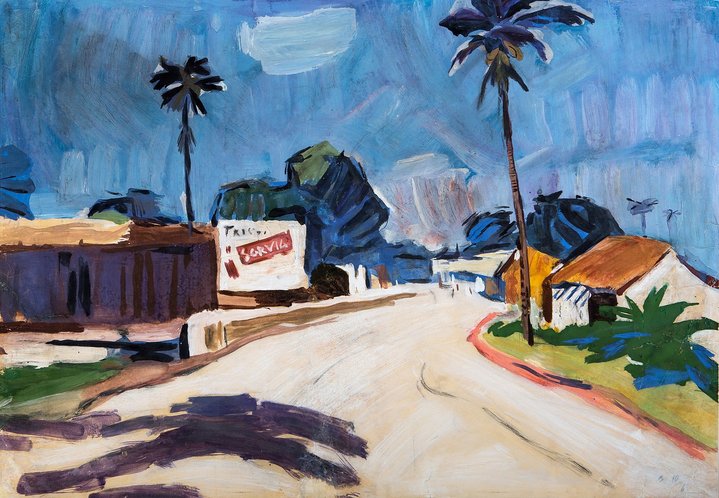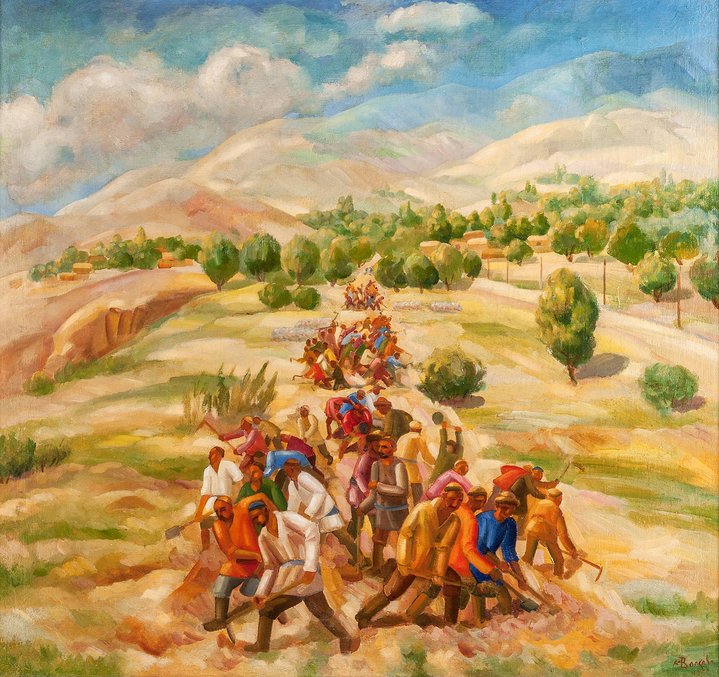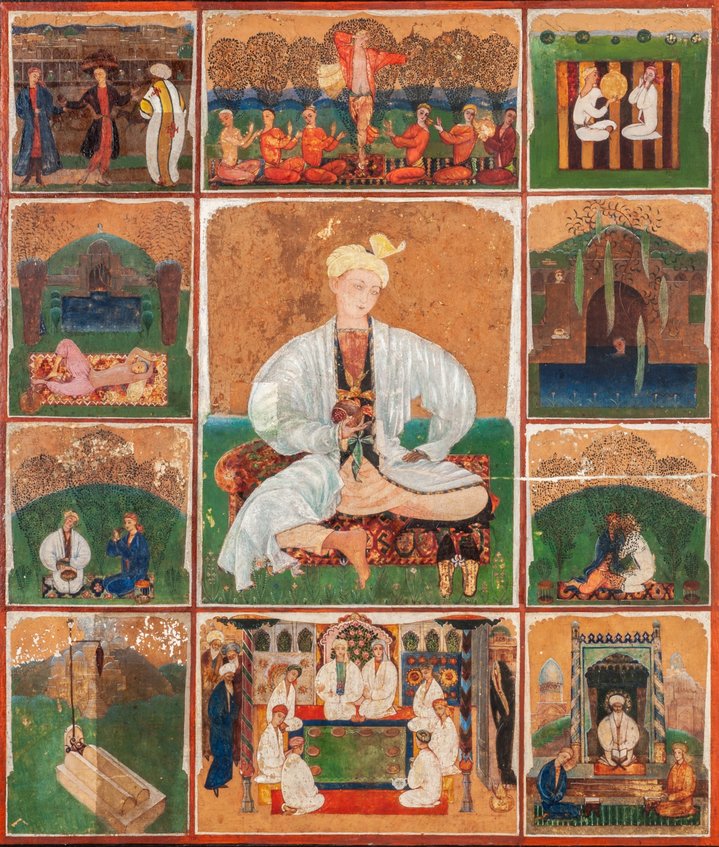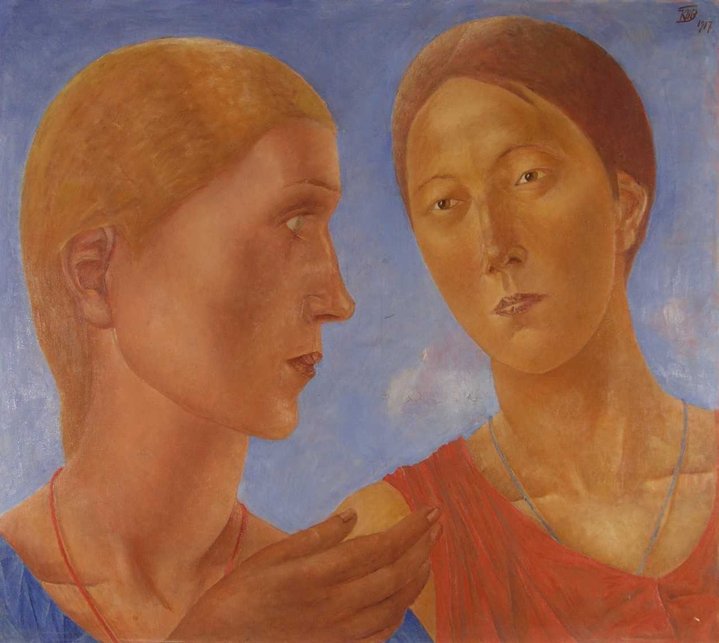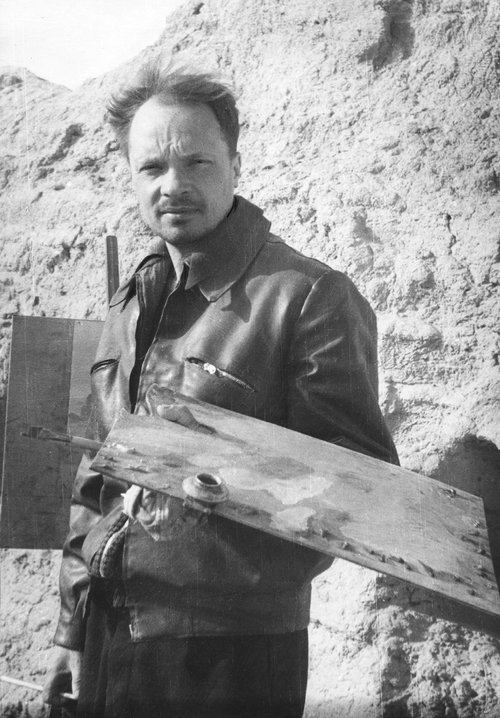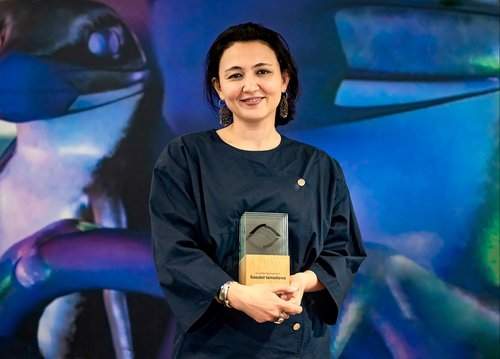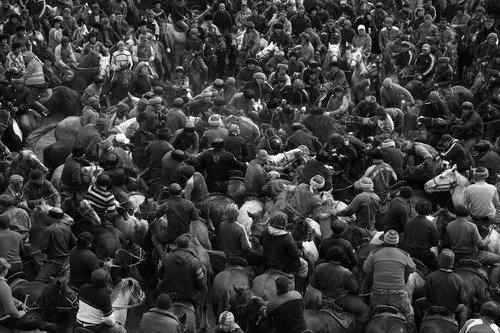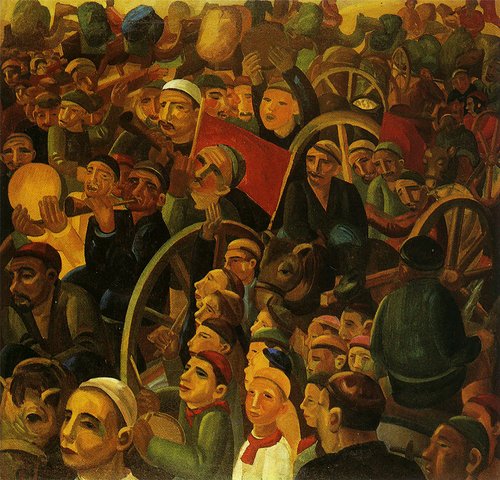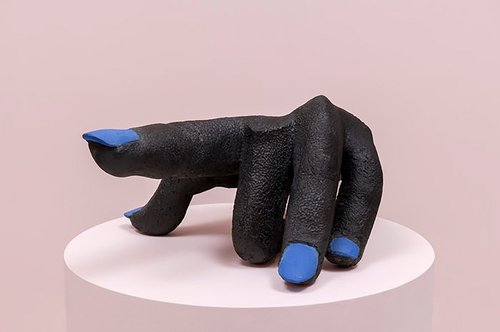The Great Silk Road to Socialism
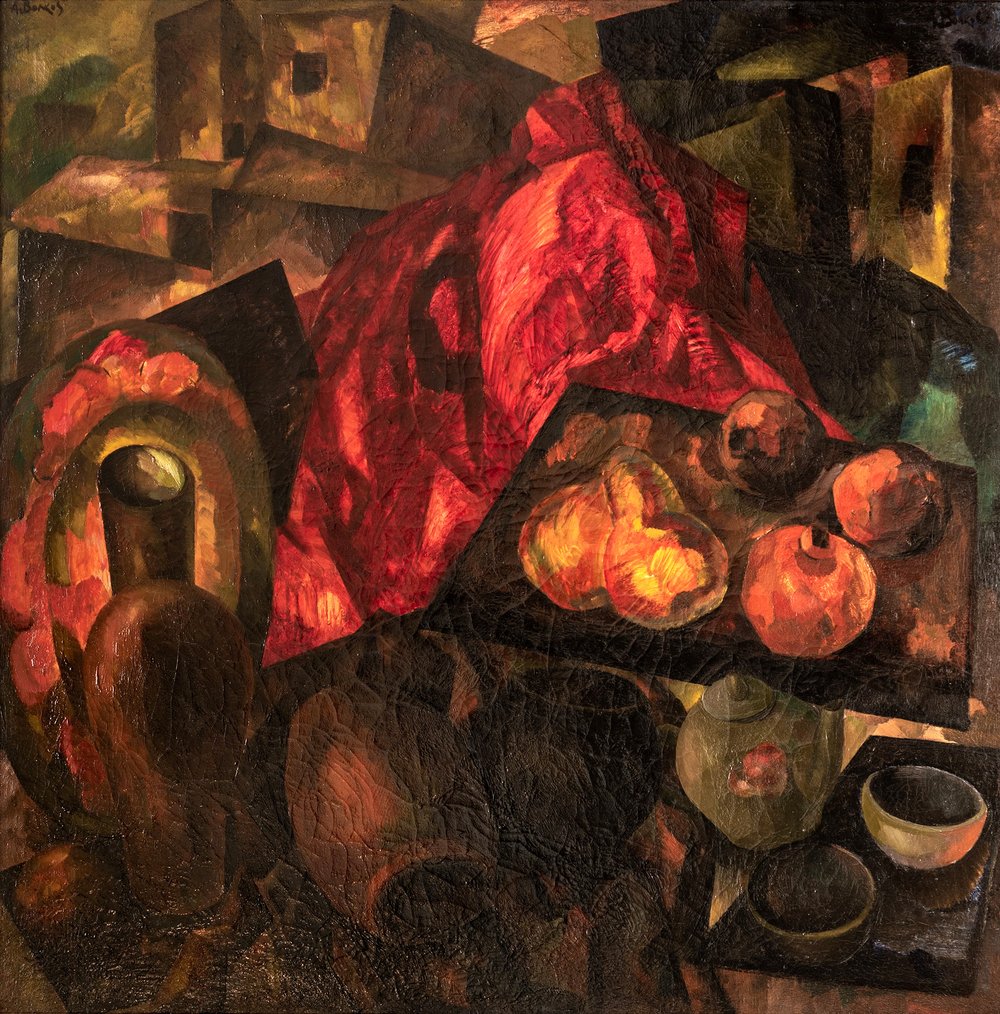
Alexander Volkov. Still-life. Red still life. The State Museum of Oriental Art. Courtesy of House of Russian Emigre Community named after Alexander Solzhenitsyn
The House of the Russian Emigré Community in Moscow is showing the exhibition ´Those Who Have Touched the Sun. In Search of Style: Avant-Garde and Realism in Central Asian Art of the 1920s-1960s´, a collaboration with the Vellum gallery.
An artistic movement somewhat fancifully called the ´Turkestan avant-garde´, has increasingly become a popular trend in the exhibition policy of Russia´s largest state museums. The paintings by and fates of Russian and Soviet avant-garde artists, who travelled to the Soviet Central Asian republics, have created a legacy of bright and spicy colours of the Soviet south. After the defeat of modernist movements in Russia in the late 20s and early 30s, the exoticism of the East helped to mask the avant-garde formalism of artists´ styles at a time when only dogmatic socialist art could exist in the RSFSR (an acronym standing for the biggest part of Soviet Union that is now Russian Federation). There was less attention paid to radical painterly approaches in the outposts of the Soviet empire. Perhaps that is why exhibitions with such orientalist stylised paintings preserved away from the scrutiny of censorship, became particularly popular with the art going public in Russia just before the pandemic. Exhibition projects in Moscow at the Garage Centre for Contemporary Culture and the Pushkin State Museum of Fine Arts, flown in from museums in Uzbekistan, sparked off once more a taste for melancholic landscapes with the ruins of ancient cities covered in sand, as well as for images of fragile, androgynous young men wearing national costumes.
Now that Russia is culturally and politically isolated, the fashion for the ´Turkestan avant-garde´ cheers up an unrequited desire for global culture and distant countries. The project, ´Those Who Have Touched the Sun´ consists of a large number of paintings from private collections as well as rarely exhibited treasures from Moscow´s Museum of Oriental Art, including works by Mikhail Vrubel (1856-1910), Kuzma Petrov-Vodkin (1978-1939), Robert Falk (1886-1958), Alexander Tyshler (1898-1980), David Burliuk (1882-1967) and Pavel Kuznetsov (1878-1968). There is also a curiously designed section featuring non-conformist artists, the ´second Russian avant-garde´, such as Vladimir Nemukhin (1925-2016), Anatoly Zverev (1931-1986), Vladimir Weisberg (1924-1985) and Dmitry Krasnopevtsev (1925-1995)). However, the true heroes of the show are three artists who lived in Central Asia for several decades.
The main protagonist of ´Those Who Have Touched the Sun´ is undoubtedly Uzbekistan-born Alexander Volkov (1886-1957) with his teahouses and caravans, floral bouquets, cotton pickers and road construction. Volkov started out painting cubist and futurist compositions, creating a kind of abstract figurativeness. Later on, when the avant-garde was stifled, Volkov moved on to large, multi-figure canvases and sprawling, thickly painted still lifes. Volkov's early and late paintings (the best are from the collection of the family of the artist) hang opposite each other, revealing the path he made deep into socialism. It is an evolution characteristic of the times when artists, who were initially outsiders and absorbed experimentation as the only possible way of creative existence, adapted to the political situation in order to survive.
It was a sad predicament and one which I can only approach with empathy. This trajectory from freedom to conscious necessity is typical for all artists in whichever field, who happened to be born during the brutal years of emerging Bolshevism. No one escaped the painful fractures of style and biography. It was also possible to leave the capitals of Russia and go south, to literally hide under ´couleur locale´. However, even here there was a requirement to comply with the absurd (and in themselves exotic) norms sent from the metropolis linked to the pathos of building socialism.
The name of the exhibition in the House of the Russian Emigre Community (which was founded by Alexander Solzhenitsyn, dedicated to Russian cultural figures scattered around the world) is essentially problematic. It is not so much an art history problem as a political one. Although these southern outposts, far away from the Communist party headquarters and repressions, gave artists a slice more of freedom, life was not without its troubles. Artists had to become like chameleons. Usto Mumin (otherwise Alexander Nikolaev, 1897-1957), an eccentric former officer from the Voronezh nobility who converted to Islam in Uzbekistan, ended up in prison. The exhibition includes several of his paintings and drawings and his legendary ´The Bridegroom´ and ´The Pomegranate Rite´, an icon with stamps narrating a love story between two young men normally kept in storage in the Museum of Oriental Art.
Similarly, Urals-born Viktor Ufimtsev (1899-1964) started out as a futurist and ended his life as a People's Artist of the Uzbek SSR. His career and biography bear all the typical twists and turns, his metamorphoses and creative strayings, from oriental landscapes resembling expressionist abstractions to a fully realised adherence to the features of so-called austere style of the 1960s, a movement within Socialist Realism.
Alexander Volkov's paintings of ´direct action´, bright and juicy, as if painted with precious stones, rubies and sapphires, sets a cheerful, sultry and optimistic mood even in his late works. And Mumin, under the guise of scourging (in fact, praising and adoring) the Bachis (teenage boy dancers), Bais (wealthy landowners) and ways of the old-regime, wove his own, extremely aestheticised Central Asia, as if pasted deep inside Beardsley's ´Yellow Book´. Ufimtsev was the ultimate survivor as he had less talent and radicality of style.
In addition to canvases and works on paper, in the foyer there are glass cabinets with documents and photographs. The theme of Turkestan avant-garde is here shown through the fate of specific people, where their canvases become windows into their biography. Curator Lyubov Agafonova goes for a benign exhibition title describing this as a ´search for style´, with artists drifting from avant-garde to ´realism´, but we all know what this drift cost the artists in terms of their own wellbeing. Is this so-called ´search for style´, not ultimately an ´attempt to escape´?
Those Who Have Touched the Sun
House of Russian Emigre Community named after Alexander Solzhenitsyn
Moscow, Russia
28 November 2023 – 3 March 2024






